Bauhaus

The organism of a house evolves from the course of events that have predated it in a house, it is the functions of living, sleeping, bathing, cooking, eating that inevitably give the whole design of the house its form...the design is not there for its own sake, it arises alone from the nature of the building, from the function it should fulfil...architecture has not exhausted its raison d'etre, unless we consider our emotional needs for harmonious space, for melodious sounds and for room to move, that first bring the space to life, as the purpose of reaching a higher order. Walter Gropius, in 1930

In German, the word Bauhaus means literally, "building houses". But, beyond words, the concept refers to a whole new conception of arts and life. Part of their basic training, the artists were encouraged to go out of their narrow expertise - not only painting, designing, sculpture - and to embrace the area of creative experiences. The ain was to offer them a wider base for improving their knowledge.

The idea of this article started relatively spontaneously. While being in Germany in 2009, I took various opportunities for understanding more about this movement, which I knew but only at a very superficial level. I was familiar with many of the works and projects, but was fully unaware of the philosophical background of the entire movement. Since, I was fascinated not only by the diversity of the artworks belonging to the Bauhaus movement and the current influences, but also by the holistic conception corresponding at a great extent to the needs of the world we are living today.

Kunstgewerbschule was founded in Weimar by Henry van de Velde in 1908. In 1919, he was succeeded at the head of this institution by Walter Gropius, who had closed relationships with Weimar's other school, theHochschule fuer Bildende Kunst. Three years before he recommended and the local authorities agreed, the merging of the merging of the Kunstgewebeschule and the Hochschule fr Bildende Kunst into a single interdisciplinary school of craft and design.

While he fought on the front of the WWI, Gropius wrote "Proposals for the establishment of an educational institution to offer artistic advisory services to industry, trade and craft". The manifesto of the Movement was released in 1919 - as a couple of paragraphs expressing the main idea of the founder in a very concise form -, and illustrated by a woodcut - The Cathedral of the Future, an industrial utopia using the religious symbol as a pretext for inclusiveness and holistic perspective.

Once confirmed as the leader of Bauhaus, he followed his principles and succeeded in bringing in Weimar various outstanding artistic names of the day: Lyonel Feininger, Gerhard Marcks, Johannes Itten, Georg Muche, Paul Klee, Oskar Schlemmer, Wassily Kandinsky. The expressionists were joined by De Stijl representatives. In 1923, one of the most representative figures of the movement, Theo van Doesburg, delivered some lectures for the students of Bauhaus. Another influence is from the part of the Russian Constructivism.
+Bauhaus+-+Live+at+Shibuya+Kokaido,%2BTokyo%2B28%2BMay%2B1983.jpg)
Even Gropius was an architect by formation, a department of architecture was absent in the first years of life ofBauhau's school. Ironically enough, in many cases the movement is identified more by the influence in the area of city planning and manners of building, than in the area of design and visual arts, in general.
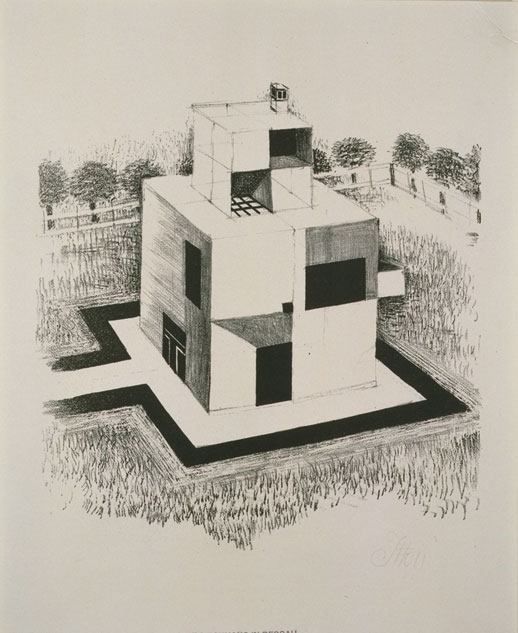
The context when the Bauhaus was born is extremely interesting - a tumultuous period, both in international and home politics - the end of the WWI, the Russian Revolution of October 1917, the boiling socialist-anarchist movements in Germany, among which the Spartakus Bund lead by Karl Liebknecht and Rosa Luxemburg - asin the area of arts, where Dadaism and Blaue Reiter and Fauvism and De Stijl were only ones of the most important new categories of artistic expression. Despite obvious political orientations - on the left - of some of the members of the school's board, Gropius outlined and tried to maintain his own life a self assumed political neutrality. In the same time, he was a strong believer in the need for a new society, in his aesthetical vision projected as a total environment where all the manifestations of arts were connected and interdependent in a better world for the humans. A vision transmitted for decades and resurged in our 21st century.
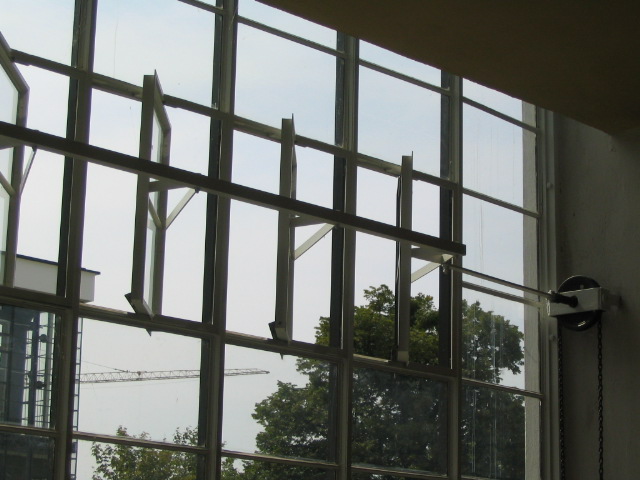
His vision about the mission of arts is outlined in the manifesto published in 1919, in his first year of directorship. The starting point of his approach was the reform of education, as a first step in creating a unitary framework covering the entire spectrum of artistic activities. The system was organised on the basis of a master-apprentice relationship, mirroring the Renaissance and concepts of education, turning around the idea of spirituality. But the main idea of the education was more than getting the knowledge of skills. Paul Itten, for example, used to start his classes with breathing exercises and gymnastics, while teaching theories of form and colour or art history, and outlining the correspondences between musical and spatial composition, in the spirit of harmony and equilibrium.

The spiritual interests of Itten went well beyond his pedagogical purposes and he, together with Muche, get more involved with the Mazdazbab sect, whose teaching and practices - as the vegetarianism, for example - heintented to introduce to Bauhaus. In December 1922, following various conflicts with Gropius, he left Bauhaus.

From the very beginning the activities of Gropius' school - a state institutions - were not regarded with sympathy by the local politicians and guilds. The eccentricities of people like Itten and his followers increased the suspicions and disagreements. The local guilds representatives were worried about a possible shortage of jobs took by Bauhaus students and accused the school of being a hotbed of communism and subversion.

In a move to alleviate some critics and to outline the importance of the movement, in 1923 it was organized an exhibition featuring the works of the school. The feedback received by the exhibition in US and abroad was impressive, while in Germany the positive echoes were almost non-existent.

We wanted to create living things with contemporary relevance suitable for a new style of life. Huge potential for experimentation lay before us. It was essential to define our imaginary world, to shape our experiences through material, rhythm, proportion, colour and form. Gunta Stlzl

An important part of the pioneering work of Bauhaus is represented by the place assigned to women' education. At the time, most part of the women was receiving education at home with tutors. The Bauhaus introduced on the artistic market of the time various names of women. At the beginning, the number of women applying for education superseded the men, but in a relatively short time, their names were lost. We rarely remembernowadays about Ilse Fehling (sculpture), Alma Siedhoff-Busher (toys), Marguerite Friedlaender-Wildenhain(ceramist) or Benita Oette (weaving).

The struggle with local authorities for winning respect and reconnaissance was shadowed by the rapid and not always predictable in the good sense, evolutions taking place on the political stage in Germany. Weimar, the headquarters of the school was the city who gave further signal of the dark times approaching, by electing the National Socialist German Worker's Party.

As a direct consequence, the funding was limited and, in 1926, Gropius moved the school to Dessau, a city enjoying a more relaxed political environment. But, in the same time, Gropius was looking further for increasing the autonomy of his establishment. One year before the move, in November 1925, with the financial support of Adolf Sommerfeld, Gropius created a limited company to promote and retail the school's designs - BauhausGmbH. - duly produced a catalogue, designed by Herbert Bayer, which illustrated Bauhaus products. The idealistic period was about to end.

When Gropius relocated his school in Dessau - and designed the new headquarters -, the city was a very quiet industrial city, with woodlands around. It kept those treats today. The friendly landscape is punctured by thegeometric houses of Bauhaus former residencies.
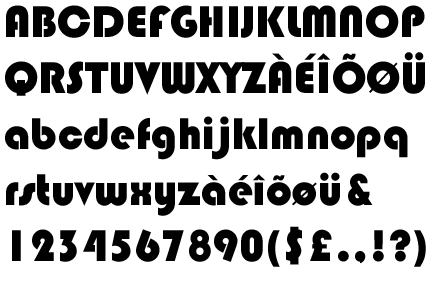
The new location is reflecting a shift in the general perception of the world of Gropius himself. He ceased to be a strong believer in the anti-capitalist, socialist utopian ideas shared in his first part of the career being more interested in a capitalistic-functional approach. At the level of the works produced by Bauhaus in this period, it is reflected by the increase level of industrial production.

In the following years, Gropius became more interested in the theoretical approaches and wanted to delegate as more as possible from the administrative tasks. After failing in 1928, to hand over the directorship of the Bauhaus to Ludwig Mies van der Rohe, he appointed the Swiss architect, Hannes Meyer, a communist, as professor of the newly rebranded Hochschule fuer Gestaltung/Institute of Design, position held until July 1930. Meyer introduced a more scientific approach to Bauhaus and introduced lectures on economics, psychology, sociology, biology and Marxism to the curriculum. The Constructivist period ended with him, as the focus on "pure" arts. In parallel with the expansion of Nazism, end 20s and beginning 30s registered an increase in the communist activities within the school, including by direct involvement in supporting various strikes. It creates various conflicts with old and new names of the Bauhaus, worried about the increasingly negative press, leading finally to the dismissal of Meyer.

He was followed by Mies van der Rohe whose main task was depoliticization of the school. His first step was to close the school, forced 170 students to reapply, expelled others and created a new curriculum. The new interest was in architecture, which focused the most part of the interest of the educational program. The political interests were completely eliminated.

The full relaunch of the school was stopped by the victory of the National Socialists in Dessau, October 1931, which prompted to the fulfilment of their old dream - the closure of Bauhaus.
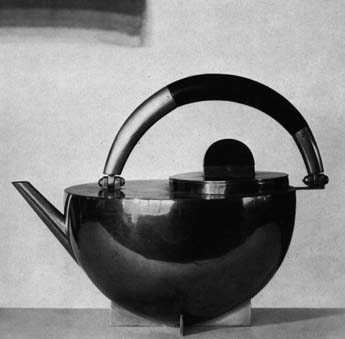
Bauhaus was moved by Mies as a private school in Berlin, but followed the same path following the further political victory of the National Socialists. The premises were raided by the Gestapo, and on the 19th July 1933 it was took the decision to dissolve the school. Many of the masters, including Mies, Marcel Breuer, Walter Gropius, and Josef Albers emigrated to the United States to escape persecution and in 1937 Lszl Moholy-Nagybecame the director of the short-lived New Bauhaus in Chicago. A year later, a retrospective of Bauhaus design was held at the Museum of Modern Art, New York, and the school's reputation as the most important design institution of the 20th century grew.

The Functionalist approach to design pioneered at the Bauhaus had a fundamental impact on subsequentindustrial design practice and provided the philosophical bedrock from which the Modern Movement evolved. The Bauhaus also had a profound and widespread impact on the way in which design was subsequently taught and this was most especially felt at the Hochschule fur Gestaltung, Ulm.

One of the most preserved places where the heritage of Bauhaus was transmitted is Israel, where, beyond Tel Aviv, the only city in the world built in the Bauhaus style, it could be found traces in Haifa, Jerusalem or in the kibbutzim.

The influences are more belonging more to the register of the International style and are adapted to the functional needs of the city in terms of social and climacteric treats. It favours the asymmetry and regularity, with smooth facades and open floor plan. The windows are smaller. The whole complex of the White City is part of the UNESCO heritage.

Bauhaus furniture design is inspired by the employment of steel frames as foundations and support for furniture such as tables, sofas, chairs and lighting. Most of the tubular steels used are mass produced by machines, which in effect reduces production expenses and output value in the markets. The design standards for the product line are focused on the use of the furniture. The principle behind every creation is that each piece must be functional and desirous but at a much lower value. Bauhaus design originated from the Weimar Republic in early 1919, founded by Walter Gropius, who later on opened the design school to revolutionize furniture production by allowing cost efficient materials to play an important role in furniture and to greatly accord comfort and functionality in each creation.

Bauhaus furniture is designed to offer comfort, elegance and functionality. It is prominently described by the design industry as clean, simple and modern. Each of the furniture is lay out with great considerations on its use and design and price. The philosophy of Bauhaus furniture is that each piece must be able to meet the modern day standards of a consumer both in elegance and functionality. An ideal example is the chairs or sofas produced and designed in this manner. Most chairs are elastic, extendible, stuffed with upholstered support and seats are designed to allow angle positioning to ease the pressure on the lower torso when sitting by providing back support to it. Bauhaus furniture comes handy and lucrative when supplied in a modern day dwelling space like condominium units and flats. The ultra-modern design perfectly blends with the fine lines of interior composition. The designs are unique, truly one of a kind and is inspired by modern day artisanship with great focus on usability and affordability. Although a product of the early 20th century, Bauhaus design somehow influenced mid-century modern classic furniture, thus when put together inside a home, the natural ambience of living in a modern world becomes undeniable and essential element of the interior space. Most Bauhaus teachers and learners fled to different parts of Europe after the eruption of war and have managed to impart the inspiration and functionality of each piece into most European homes.

Mid-century modern classic furniture was partly inspired by the Bauhaus school of design. The former focusing greatly in the implementation of organic materials and simplicity in each piece of furniture marketed. Bauhaus is a symbol of modern lifestyle that embraces inexpensive production but comfortable pieces. It is described as an art of functionality, arising from the utilitarian thought that everything should be well and fully optimized to serve its purpose. Mid-century modern classic furniture is inspired by different European designers who in their own time and space managed to set furniture standards combining style, elegance, comfort, natural shapes, democratic and ultra-modern design foreseen to outlive some of the oldest furniture designs. Whether for home or office use, the fine line between affordability and functionality can help you decide on which modern furniture will best reflect your personality in designing your own home.

Sharing their name with the vastly famous design school in Weimar, Germany, Bauhaus does credit to their legacy of culture-shifting design and can be seen as a clothing brand with a difference. Having launched in Melbourne, Australia back in 2005, Bauhaus has always prided itself as being 'a local brand with a global outlook'. Despite the growing competition in the t shirt and clothing markets, Bauhaus quickly established itself with amazing speed as a brand denoting quality, value for money, and, in their own words, 'up-to-the-minute' designs and street wear for both men and women.

In the past few years the Bauhaus clothing range has expanded to offer apparel for both boys and girls, in addition to their primary focus on men and women's street wear. Editorials featuring Bauhaus t shirts and clothing in magazines such as 'Cosmopolitan' and 'Girlfriend' have gone further in establishing the brand, into what is now fast becoming a household name in the clothing industry.

The strength of Bauhaus' competitiveness without doubt lies in their ability to stay on the pulse of teen and young adult trends, which clearly carries through in their super-cool designs. Their new 2010 Winter range demonstrates their strength in blending a variety of styles together, creating a truly eclectic result. With leather making a strong feature in both the men and women's ranges, as well as the children's, Bauhaus have brought James Dean back to the streets, mixing the style with vintage motifs as well as harder-edge contemporary elements.

The success of the Lamy fountain pen can be attributed to many factors but one of the prime reasons for its success and its cult status is the influence that Bauhaus design principles have had on its development.

The Bauhaus design movement started in Germany and is an architectural movement which has had a huge influence in the design of all sorts of products, not just buildings. Germany is well known for its fine industrial engineering and a small pen company in Heidelberg employed designers who were part of the Bauhaus movement to design its Lamy 2000 pen.
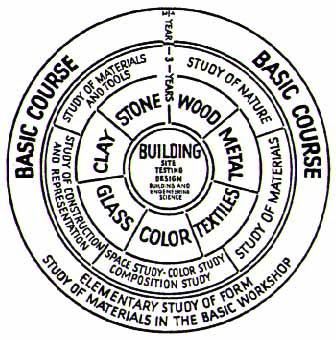
The success of the Lamy 2000 pen propelled this small pen company based in Heidelberg onto the world stage and a pen that was first released in 1966 is still being manufactured today.

Bauhaus design holds that form, that is the beauty of something, should play second fiddle to it' function, that is the use of the product. So while Lamy pens are beautiful to look at they perform exceptionally well because the first priority of any Bauhaus designer is how the product or object actually performs its primary task or job.
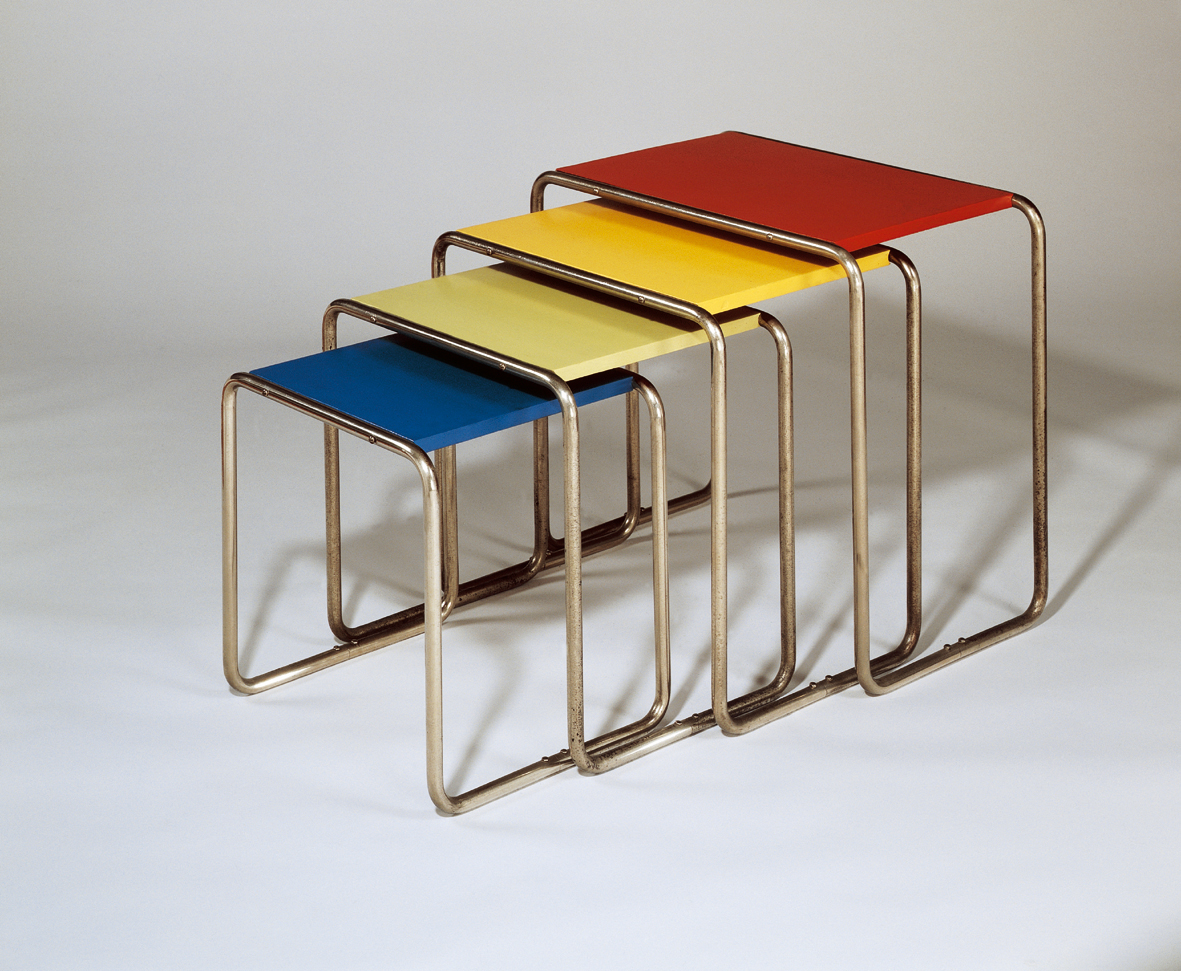
So you will notice that Lamy pens sport clean, minimalist design and bright primary colors and are quite quirky among fountain pens but are very highly regarded nevertheless.

They are super starter pens for anyone thinking of using a fountain pen in their everyday life, work or school because they have a great, inexpensive range for starters as well as high quality fountain pens such as the Lamy 2000, Pur, Dialog 3, Studio and many others.

Furthermore they produce a good range of promotional pens which can be great, unique products to promote your company's brand and which leave a great impression with the recipient.

The mid 20th century furniture from designers such as Eileen Gray and Florence Knoll are as popular now as they ever were with their sleek minimalist contours adorning many people's houses today in the 21st century. With such an extensive choice of design classics from Bauhaus designers, it would be easy to think you couldn't go wrong with matching different pieces from different designers. Even though many of these wonderful pieces look amazing in their own right, it is sometimes difficult to get the right match between several pieces in order to bring the room together. Two pieces that do go wonderfully together are the E1027 Side Table by Eileen Gray and the 2 or 3 Seater Sofa by Florence Knoll, increasingly known as the 'Knoll Sofa'.

The E1027 Side Table was designed in 1926 by the Irish architect and designer, Eileen Gray. She originally built a house in the south of France called the E1027, and also designed the furniture specifically to go inside that building, including this side table.

The E1057 Side Table is probably one of the most popular and iconic side tables of the Bauhaus movement. This stunning item sits beautifully by itself, or next to a chair or sofa, such as the Knoll Sofa. Its tubular chrome frame and adjustable glass platform are magnificent in their simplicity. When you look at the E1027 Side Table you would not believe it was designed over 85 years ago. It looks as current today as it did the first day it was produced.

Just as the designs of Eileen Gray still look contemporary, the same can be said for the magnificent Knoll Sofa as it has become known. This luxurious 2 or 3 seater sofa is almost a modern interpretation of the Victorian Chesterfield sofa with its multiple buttons and angular features. The furniture of Florence Knoll is steeped in the tradition of Bauhaus and is designed to be functional, which is why it is used as much in offices as it is in residential homes.

Chrome plated tubular steel may not sound like the material found in antique furniture. Steel does not have the patina, warmth, or graining of wood normally associated with antiques. However, the benchmark chair of contemporary furniture, the Wassily, which was designed in 1925 by Marcel Breuer of the Bauhaus School, will, in only 15 years, be considered an antique

Architect Walter Gropius founded the Bauhaus School after World War I in Weimar, Germany. Its mission was to unite the fields of creativity and craftsmanship in the design of all products. At the school there were master teachers in the areas of architecture, furniture design, painting, typography, textile design, music, sculpture and color, each with the emphasis on functional design. The familiar mottos of "form follow function," "less is more," and "a house is a machine for living" came from the Bauhaus School.

Sherrill Whiton states in his book Interior Design and Decoration,

In retrospect, it was the most important school since Louis XIV had codified art in the Institut de France and Napoleon I had united art and science in the Polytechnique.

There were many famous artists that were educated or taught at the school. In addition to Gropius, there were Marcel Breuer, Mies van der Rohe, and Le Corbussier. Besides being visionary architects, these men also designed furniture for their buildings, in the tradition of the Adam brothers of 18th century England. One chair in particular was to change the course of furniture design to this day.

Gropius had designed a new campus for the Bauhaus School, and legend has it that 23 years old teacher Marcel Breuer had the assignment of designing furnishings for the teacher's residences. As a designer, he sought, to integrate the geometry and simplicity of the Bauhaus philosophy with a strong desire for human comfort. The resulting chair for the home of faculty member Wassily Kandinsky, an Abstract Expressionism painter, was made from tubular steel. This was the first time the material had been used for general interior furniture, but its light weight, affordability, and strength made it an ideal choice. Although the chair is void of any decoration, the tubular steel frame gives a very complicated and boxy effect. The original version had back and seat slings of canvas that kept the body from contact with the nickel plated frame. By 1930, however, it was produced with chrome plating, which did not tarnish, and leather was option for the slings.

Shortly afterwards, many of the classic contemporary designs we see today were created. Mies van der Rohe's Barcelona chair and Bruno chair, Le Corbusier's Longue and Grand Confort chair are just a few that are still popular. Throughout their production, adaptations have been made to improve the materials and durability.

And there are copies to suit all pocketbooks. What standards can be used in the future to judge the quality, authenticity, and value of this new breed of antiques? Lauren Cadmus of Knoll International gives these guidelines: "The licensed version has only three options for upholstery: brown leather, black leather or natural canvas. The frame is chrome plated tubular steel, and the dimensions are always per Breuer's original design, 30 ¾" wide x 27" deep x 28 ½" high. Look for normal signs of wear on the upholstery and frame. Also, all Knoll manufactured chairs include a product number, identification number, and the signature of Marcel Breuer."

The next question then asks whether the authorized version of this chair with an I.D. number of 1,000 become more valuable in the future than the identical chair, made by the same standards, with I.D. number 100,000? It is clear that we will have to rethink the definition of "antique" for these steel and leather contemporary chairs.






+Bauhaus+-+Live+at+Shibuya+Kokaido,%2BTokyo%2B28%2BMay%2B1983.jpg)






























































No comments:
Post a Comment